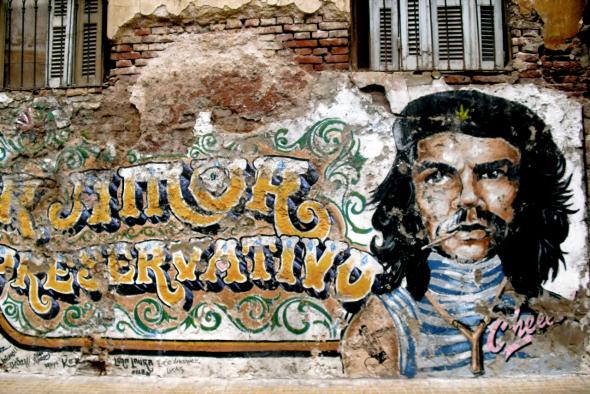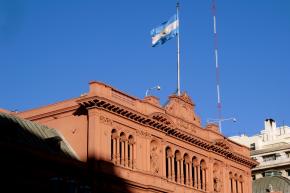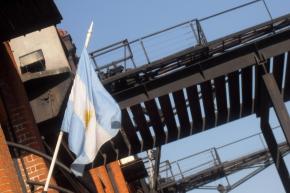From Africa to Buenos Aires – At the Forefront of a New Migratory Nexus?
It’s Friday afternoon at the Al-Ahmad mosque in lower Buenos Aires. Despite gathering here with their multicultural brethren for prayer service, the small group of African men walking out the door is part of an inchoate community that has become a bit of a talking point in this vast and diverse metropolis. In a country in which Afro-identity has been remiss for the most part of a century, for a while people mistook them for those elusive yet re-emerging Afro-Argentineans, or at best for Brazilians, Dominicans, perhaps Haitians. But these they are not. Aboubakar, Mamadou, and Damien are Africans from real Africa, the tip of the iceberg of a largely unpredicted migratory corridor that suddenly landed in Argentina. They hail from Mali, Senegal, and Mauritania, respectively, but theyare certainly not alone. Many other young men arrived over the last decade from Ghana, Nigeria, Sierra Leone, Liberia, two Guineas, Cameroon, Congo, and even the far-flungEthiopia.

These recent arrivals are a marginal expression of a paradigm-shifting reality: Africans aspiring to leave their countries, but finding nowhere to go. Stringent immigration policies, enhanced border controls, and multilateral cooperation following 9/11 have limited the amount of Africans that make it to traditional destinations in Europe and North America, either regularly or irregularly. Yet this has not deterred many who still want or need to migrate, rather pushing forward a search for alternative destinations in a context in which the distinction between economic migrants and refugees or asylum seekers is increasingly blurred, and in which too many of those categorized ‘economic migrants’ are de facto refugees. Whilst organizations have implemented ‘mixed migration’ as an overarching term, it seems possible that categories are failing to accurately portray the complexities of contemporary migrant experiences.
 Individual migratory projects in West Africa appear to be adopting longer routes, with lengthier and more frequent stops to raise funds for the following stages. Partially due to the harshness of such voyages (e.g., across the Sahara), migrants are overwhelmingly young men, as seen in ‘transit countries’ including Cape Verde, Morocco, and Libya. In Argentina this has also become apparent, as the last decade has registered a juvenilization and masculinization of the migratory corridor. Between 2004 and 2009 slightly less than 700 residence applications were filed, while asylum petitions have increased exponentially over the last decade, with frequent suggestions of the instrumentalization of this entry path by some migrants, arguably for lack of appropriate access through other regular migration channels. Most new applicants are men younger than 21, an overwhelming majority of which from Senegal and Nigeria. Key informants suggest the real figures might be significantly higher.
Individual migratory projects in West Africa appear to be adopting longer routes, with lengthier and more frequent stops to raise funds for the following stages. Partially due to the harshness of such voyages (e.g., across the Sahara), migrants are overwhelmingly young men, as seen in ‘transit countries’ including Cape Verde, Morocco, and Libya. In Argentina this has also become apparent, as the last decade has registered a juvenilization and masculinization of the migratory corridor. Between 2004 and 2009 slightly less than 700 residence applications were filed, while asylum petitions have increased exponentially over the last decade, with frequent suggestions of the instrumentalization of this entry path by some migrants, arguably for lack of appropriate access through other regular migration channels. Most new applicants are men younger than 21, an overwhelming majority of which from Senegal and Nigeria. Key informants suggest the real figures might be significantly higher.
Any doubt around this matter may be empirically dispelled on a walk around Buenos Aires’ Once district, down Avenida Corrientes to Plaza Misere, the nerve centre of Little Dakar. The sidewalk is peppered with African salesmen, some operating out of small foldable tables, others from briefcases set on stools, others using an iconic umbrella-like contraption to exhibit merchandise: a selection of handcrafted goods, DVDs, cosmetics, and especially counterfeit watches or jewelry that earned them the local moniker of vendedores de baratillas, or ’vendors of cheap stuff’. Many of the stores and commercial galleries along this stretch house more African trade, while local locutorios (phone houses) confirm demand in posters announcing calling cards or cheap calls to Africa.The migrants’ presence stretches well beyond Little Dakar, however. Significant communities can be found living in large port cities such as Rosario, or further inland in Córdoba, Argentina’s second most populous city. Others live in La Plata, capital of the Buenos Aires Province. Its coastal destinations whose population soars every summer, such as Villa Gesell, south of the federal capital, have equally registered an increase in African boomerang residents trading along the beachside.
As of yet, it remains unclear how African migrants enter Argentina, or even how many there are. Institutional, media and public discourses appear to be shifting away from an early puzzlement at the exotic visitors to a measure of concern. This has often been articulated by the distinct possibility that some would be entering as polizones, or stowaways, misusing asylum processes, or as minors victimized by trafficking networks. While current information suggests some might indeed arrive to Rosario or Santos, Brazil, as stowaways in container ships, this does not justify the total numbers. Irregular crossings of vast, often undermanned land borders with Brazil, Bolivia, and Paraguay, thus, appear to be the most likely entrance points. Having arrived irregularly and lackingthe required entry documents, migrants are trapped in a legal limbo, unable to obtain a precaria(temporary residence), thereby being limited to an informal integration most visible in Little Dakar.
 It is evident that Argentina, with immigration policies that are less restrictive in access and less punitive to the infractor, may be an attractive destination next to the inexpugnable European Union or the distant United States. However, it appears likely the country is currently simply in the process of becoming yet another peripheral node in a global nexus developing in the mid-Atlantic after 9/11, one in which migrants look for alternatives to Fortress Europe and USA. Other countries face the same challenge. With the Libyan crisis threatening to shift trans-Saharan migrant routes in the foreseeable future, this modest but slowly consolidating corridor may feasibly be expected to persevere. After all, people who really want to leave often find a way to.
It is evident that Argentina, with immigration policies that are less restrictive in access and less punitive to the infractor, may be an attractive destination next to the inexpugnable European Union or the distant United States. However, it appears likely the country is currently simply in the process of becoming yet another peripheral node in a global nexus developing in the mid-Atlantic after 9/11, one in which migrants look for alternatives to Fortress Europe and USA. Other countries face the same challenge. With the Libyan crisis threatening to shift trans-Saharan migrant routes in the foreseeable future, this modest but slowly consolidating corridor may feasibly be expected to persevere. After all, people who really want to leave often find a way to.
(N.B.: this text was originally prepared for the now extinct IOM Magazine. A full report on the subject, co-authored by the author, is available from the UN online library here)